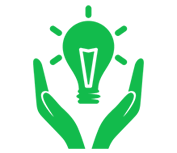

Increasing global temperatures are causing more extreme weather events resulting in more frequent and intense flooding. Much of Puerto Rico and the Caribbean’s housing lies in flood prone zones and as a result flooring material that absorbs the water leads to cracking, buckling and the spread of mold and other bacteria once they come into contact with prolonged flood events.
TEC CARIBE Products are not affected by immersion in water. They will remain dimensionally stable and in place for the lifetime of the building.
Overview & Benefits

Faster
Ease of use - Installation requires very limited training and requires a low skill level. No special tools required
FASTER TO BUILD

Cost Effective
Our building materials will compete with all existing construction methods
COST-EFFICIENT

Echo Friendly
Environmentally friendly, natural materials
ECO FRIENDLY

Safe
Resistant to water, fire, wind, projectile impact, earthquakes, insects, fungus, mold, mildew and chemical infiltration
SAFER

Stronger
Wall axial load capacity is nearly 4 times stronger for Wall Panels vs conventional construction
STRONGER

Light Weight
Our building materials will compete with all existing construction methods
LIGHT WEIGHT

Sustainable
The average lifespan for a stick build home is only 40 years
SUSTAINABLE

ENERGY EFFICIENT
Our products create a tighter structural envelope increasing energy efficiencies and reducing power consumption
ENERGY EFFICIENT

Lok-N-Blok ENVIRON
As our country strives to reduce emissions and greenhouse gasses, Lok-N-Blok becomes the alternative to products that produce those harmful emissions. LOK-N-BLOK® simplifies wall construction while improving insulation qualities.
Magnesium oxide is a versatile mineral that when used as part of a cement mixture and cast into thin cement panels under proper curing procedures and practices can be used in residential and commercial building construction.
- High Performance
- A green building product
- Free from mildew / mildew / insects (does not feed mold, mildew and insects)
- Safe reduces labor & material
- Superior Fire Resistance
- Water & Heat Resistance
- 100% Non-Toxic
- 100% Recyclable
- No mortar or cement needed


Magnesium Oxide (MgO)
Structural Insulated Panel (SIP)
As our country strives to reduce emissions and greenhouse gasses, Lok-N-Blok becomes the alternative to products that produce those harmful emissions. LOK-N-BLOK® simplifies wall construction while improving insulation qualities.
- Superior Fire Resistance
- Non-Combustable
- No Smoke
- 100% Non-Toxic
- A green building materials
- Water & Heat Resistance
- No Mildew
- Insect Resistant
- Good acoustic performance

Traditional Materials used in External Wall Construction
Portland Cement Board
Disadvantages of Portland Cement Board in Building Houses
- It is not available for direct order from the manufacturer
- It comes with a higher labor cost than other materials
- It requires you to re-paint the siding at some point during it’s lifetime
- It is not a recyclable material
- It does not offer much insulation protection once installed codes
- The cement board is not waterproo

Gypsum Drywall
Disadvantages of Gypsum Drywall
- Maintaining temperature for both the mechanical & adhesive application of gypsum board is a bit of hassle.
- It is not mandatory however always read the manufacturer manual for maintaining temperature during joint treatment, texturing & decoration.
- Always maintain adequate ventilation during installation and curing period in the working area.
- Where exposure to moisture is extreme or continuous, never use gypsum board on that area.
- Exposing gypsum board at high temperature for extended periods is high.

Engineered Wood
Solid (Natural) Wood, Block Board, HDF, MDF, Particle Board
There are different types of engineered woods available in the market like plywood, MDF, hardboard or HDF wood, particle board, blockboard, and others. Each of these products are made using different raw materials and manufacturing process. You cannot just randomly use any engineered wood or plywood for any element. These materials vary in strength, use, durability, and cost.





































